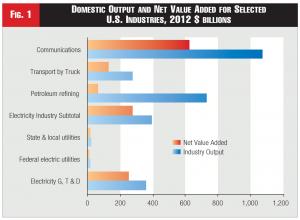Building a fully integrated grid is the next great opportunity to realize higher levels of economic efficiency and prosperity.
Silvio Flaim, PhD conducts impact assessments of natural resources and infrastructure in the areas of energy and environmental economics, taxation and finance. He is a former Chief Economist for the state of New Mexico and economic modeling consultant for Compass/Lexecon in Tucson, Arizona. Loren Toole, MSEE leads a variety of algorithm development and simulation projects related to electric infrastructure at Los Alamos National Laboratory. His modeling tools have been used in studies performed for the Departments of Energy and Homeland Security to conduct vulnerability assessments, to rank regional assets, and to simulate policy issues affecting the grid.
The electricity industry provides foundation-level services required by every other sector of the economy increasing productivity and efficiency in every human endeavor. Electrical service is arguably secondary in importance only to national defense to sustain industrial productivity that ensures our health, safety and welfare.
 figure 1 - Domestic Output and Net Value Added for Selected U.S. Industries, 2012 $ billions
figure 1 - Domestic Output and Net Value Added for Selected U.S. Industries, 2012 $ billions
The electricity industry is evolving and converging with the communications and transportation industries changing the composition of the domestic economy. An increase in sales from the electricity sector for any purpose creates employment, increases wages and produces more industrial output from other industries. But an increase in electricity sales for vehicular transportation allows the economy to skip intermediate production processes like refining, producing higher levels of net industrial output with lower levels of emissions.
To illustrate economic features of these changes, we compare Federal spending and investment in primary infrastructures and describe the structure of the domestic economy. To understand how industrial convergence with electricity sector will create a more efficient and productive economy.

